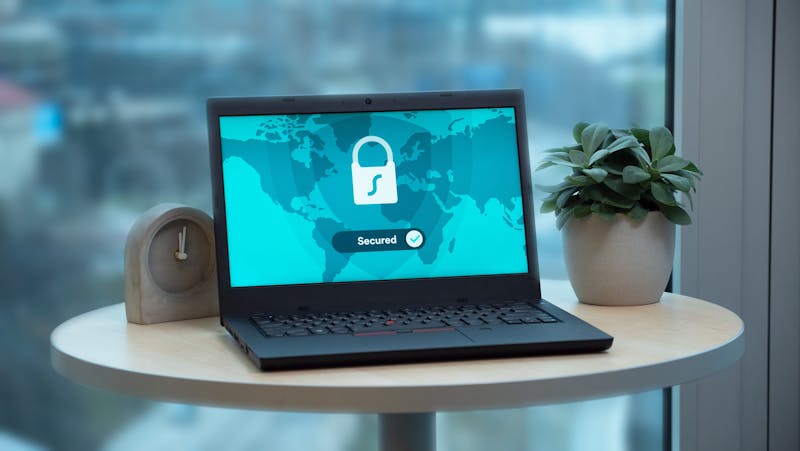How to Effectively Manage your Team of Digital Nomads
Remote work has become one of the biggest waves of change to affect the way we run our businesses. In the UK, around 4 million people now work remotely and fears of workers slacking off have been largely debunked. If anything, evidence suggest employees are even more productive at home. This has largely translated to savings for companies in more work done and reduced attrition, on top of £1,500 per employee saved in office space.
But along with the benefits come a host of new security nightmares. Up to a third of companies in the UK have had their data security breached because of remote working. Data once protected by enterprise-level measures are now accessed from anywhere, often through any available public WiFi connection.
There’s also the issue of coordination. Many remote workers do fine on our own. But faced with team projects, the workflow becomes significantly harder to orchestrate. How do you teleconference with people in different time zones, or make sure no task is overlooked in the bustle of people checking in asynchronously? How do you make sure your employees are still enjoying a healthy work-life balance?
Below we explore how you can maximise the benefits of a remote-based workforce, while mitigating the inherent vulnerabilities of this emerging way of work.
Set Reasonable Work Boundaries
While remote work may have blurred the definition of an office, boundaries are still important. Remote workers are more productive compared to their in-office counterparts, but they’re also more susceptible to overworking and burn out. Employees report having a harder time calling it a day, to the detriment of their health.
Office workers can clock out and leave work at the door, but it’s harder to ignore the siren call of one more email or task on the to-do list if it’s always just a tab or notification away on your mobile. Help your digital nomads manage their time effectively and safely. Set a cap on working hours–doesn’t matter if that’s 9 to 5 or spread throughout the day–and make sure they stick to it. Make it evident that you respect their work hours, and don’t expect them to reply to emails and messages after they’ve logged out.
Practice “Least Privilege”
Privilege is supposedly exclusive. Yet for many businesses, the word has lost its meaning. Many employees have access to “privileged” accounts, or accounts that have admin rights. It’s a mistake that may be placing your data in unnecessary risk: up to 74 percent of data breaches involve a compromised admin account.
The principle of least privilege (PoLP) means giving employees access to files, apps, and software on a need-to-work basis. Each employee only gets access to the bare minimum they need to get tasks done. This effectively places a roadblock barring the rest of your data if ever an employee is compromised.
Create Work-Specific Channels of Communication
Take out face-to-face communication and a whole host of options crowd to replace it–email, text, Skype. Left unmanaged communication channels can break down and become messy–you don’t want to be pulling up three different threads just to find relevant information.
Use an app that allows you to create work specific channels like Slack. This also helps employees separate work from their personal chat apps.
Define Productivity and Performance
One of the appeals of telecommuting is defining productivity beyond how long you work. So measuring performance based on how long employees spend online is arguably counterintuitive to the concept. You want meaningful work, not just employees running down the clock at home.
Set expectations for results and outcomes at the end of the day, or week. Make sure to set measures that make sense for each employee. For instance, your salespeople might be better off logging in outreach quotas that number of hours. These measurements give you a fair and clear way to evaluate performance beyond the boundaries of the 8-hour workday.
Set Minimum Technological Requirements…
Some tasks can be done offline, while some require consistently stable Internet connections. There are also computing and processing intensive work that can’t be done on an old PC. Setting expectations in the beginning will help you avoid disruptive technical hiccups.
There’s also the matter of connection security. The Internet has enabled remote work, but is also one of its biggest threats. Many public WiFi connections are unsafe. Using a seemingly innocuous connection at your local cafe may be the fastest way to expose data to theft. Work around the risk by asking employees to use data-encrypting VPNs when connecting to public networks.
…and Reasonable Deadlines
One advantage you trade away by going remote is immediacy. When your colleagues are snoozing while you’re working on a different continent, there will be a lot of moments when you can’t get the file or data you need right away.
That’s why giving each task a bit of leeway is crucial. Factor in the time it will take to communicate asynchronously. We can’t plan for every urgent request. But you can reduce these instances by breaking down projects step-by-step even before it begins, so the whole team can plan their hours around deliverables and due dates.
Consider Remote Hosted Desktops
One of the biggest issues of remote work is security, and the threats scale with business. Ten or more employees scattered around the world, logging in and out of their work apps using different devices and public connections is a cybersecurity accident waiting to happen.
Mid to large sized businesses with workers on a flexible arrangement may want to look at remote hosted desktops. This is a service that hosts your OS, apps, software, and working memory to the cloud. Built-in security features like two-factor authentication, encryption, and automatic idle log-outs further close the security gaps presented by out-of-office work.






